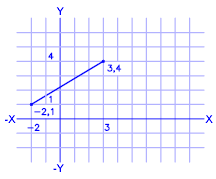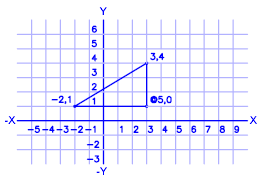|
||||||||||
|
Entering
Cartesian coordinates
|
||||||||||
|
||||||||||
|
||||||||||
|
Entering
Cartesian coordinates
|
||||||||||
|
||||||||||
It is possible to use absolute or relative Cartesian (rectangular) coordinates to locate points when creating objects
To use Cartesian coordinates to specify a point, enter an X value and a Y value separated by a comma (X,Y). The X value is the positive or negative distance, in units, along the horizontal axis. The Y value is the positive or negative distance, in units, along the vertical axis.
The absolute coordinates are based on the UCS origin (0,0), which is the intersection of the X and Y axes. Use absolute coordinates when you know the precise X and Y values of the point.
The following example draws a line beginning at an X value of -2, a Y value of 1, and an endpoint at 3,4. Enter the following in the tooltip
Command: LINE
From point: -2,1
To point: 3,4
The line is located as follows:

The relative coordinates are based on the last point entered. Use the relative coordinates when you know the location of a point in relation to the previous point.
To specify relative coordinates, precede the coordinate values with an @ sign. For example, entering @3,4 specifies a point 3 units along the X axis and 4 units along the Y axis from the last point specified.
The following example draws the sides of a triangle. The first side is a line starting at the absolute coordinates -2,1 and ending at a point 5 units in the X direction and 0 units in the Y direction. The second side is a line starting at the endpoint of the first line and ending at a point 0 units in the X direction and 3 units in the Y direction. The final line segment uses relative coordinates to return to the starting point.
Command: LINE
From point: -2,1
To point: @5,0
To point: @0,3
To point: @-5,-3
